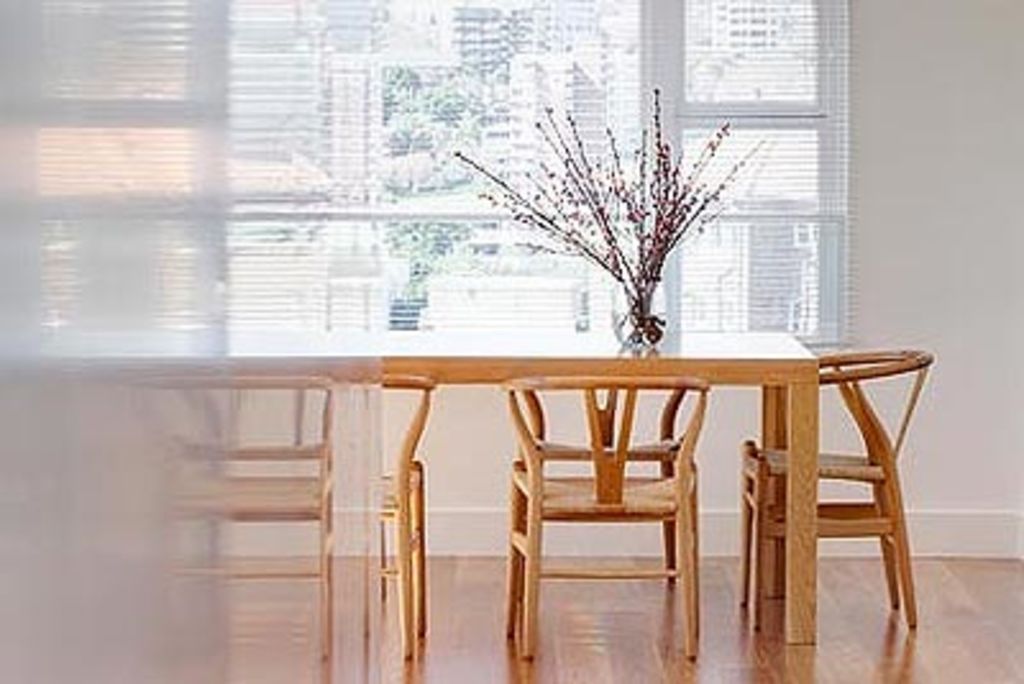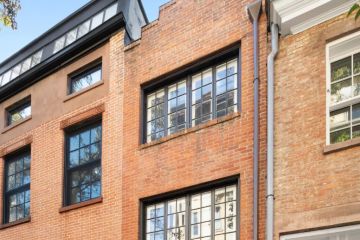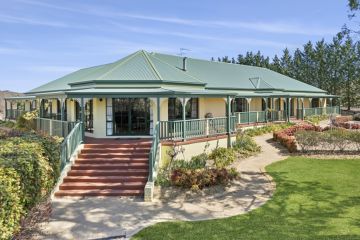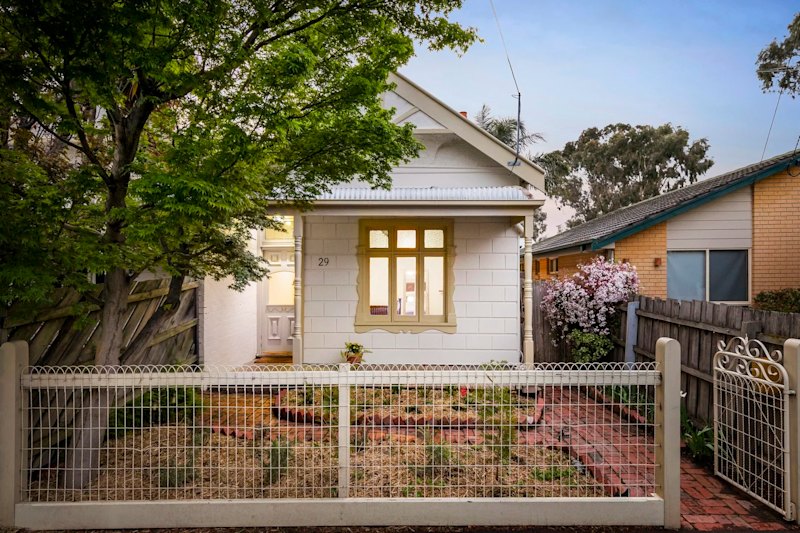For love and money

Architects and designers agree you can radically improve an apartment with a renovation. But for owners who want to sell in the near future and are concerned about overcapitalising, watching the budget is critical.
A sales consultant for Ray White Elizabeth Bay, Anthony Ross, advises generally staying “in the vicinity of 10 per cent” of an apartment’s capital value and keeping revamps in character with the building and the area.
“In an area like ours, which has a lot of art deco buildings, marry contemporary with original features,” he says. “For example, patterned ceilings and polished floors – hang on to these.”
He points out that, at best, a classy renovation can attract competition and drive up a property’s price. He saw this last year when several bidders competed strongly for an apartment renovated by the designer Georgia Day, with it finally selling well over the reserve.
“People get emotionally attached when an apartment is thoughtfully renovated and completely unique,” Ross says.
The general manager of Herron Todd White Sydney/ACT and south-east NSW, Michael McNamara, says an architect-designed renovation is usually a wise bet in a landmark building or one tightly held with good resale value.
He says the biggest factor in whether you will get your money back is “in the demographic”. “Double income no kids, empty-nesters and executives – this is the demographic. And the areas: lower north shore, inner city and the eastern suburbs.”
Studio to one-bedder
The architect William Smart of Smart Design Studio says there are ways around the overcapitalisation challenge.
First, get a ballpark figure by checking the prices brought by comparable renovated apartments in the suburb. In his own renovation, he converted a Kings Cross studio apartment into a one-bedder.
“If you … are able to change the unit type there is potential to make money,” he says. “For example a studio to one bedroom … can help to underwrite the cost.”
Smart bought his 40-square-metre apartment eight years ago for $220,000 and spent just over $100,000. Though he has not sold, he feels confident he would comfortably recover his outlay.
However, using an architect to do an apartment renovation “is a hard way to make quick money”, he says. “You usually do it for other reasons, like living in a beautiful space.”
Open up living spaces
The architect Marcus Trimble, of Super Colossal Architects, advises to start by looking at a building’s structure. If it is concrete-framed, internal walls are not load-bearing so you will be able to move them comparatively economically.
Load-bearing walls can be moved but it is costly as you need to replace them with steel beams. Trimble recommends perusing by-laws to see what is permitted and thinking about whether tradesmen will be able to get in or park in the area.
The architect Eva-Marie Prineas, of Architect Prineas, who recently renovated a unit in a concrete-framed ’80s building in Cremorne, says often the priority is to open up living spaces and streamline rooms so mess can be stored away.
“You can live tidily if you have somewhere to put things,” she says. “Clean and free surfaces make an apartment seem more open and relaxed.”
In Cremorne, this meant getting rid of the wall between the kitchen and living room and pulling out dated archways.
Prineas also integrated the laundry into a wall of cabinetry; revamped a mission-brown bathroom, adding a translucent door for natural light; and put the owner’s bed on a platform, giving him water views and space for a walk-in robe behind the bedhead.
(The two-bedroom unit cost about $250,000 10 years ago and the renovation was $180,000. An estimate of the unit’s value is $700,000-$800,000.)
Typically, when first thinking about a renovation, William Smart sits down with owners to analyse the specific problems.
“I try to clearly understand what the actual problem is and how to fix it,” he says.
“Sometimes it is about dysfunctional planning; sometimes it is the kitchen; other times it can be the quality of the light.”
Identifying the problem, he says, leads to a concept. “In my own apartment the problem was how to fit in all the things I need for living and the idea was to put it into one gesture, a wall like a Swiss Army pocket knife.”
Smart essentially divided the apartment off at one end, creating a bedroom where there was previously a kitchen and dining room.
He moved the kitchen into the living space, along one red wall with functions popping out when required.
Clever with cabinetry
For the architect Andrew Waller of Waller Design, the clever use of cabinetry can be a more economical way of restructuring spaces than removing walls.
He says cabinetry can be storage and a visual element to clean up and link spaces.
“With a spatially disjointed apartment, joinery can be a unifying element,” he says.
“If you have three small rooms, for example a kitchen, hallway and bedroom, and you put joinery with the same language or material into each of these different spaces, it will unify them.”
Eva-Marie Prineas and her architect husband Peter Titmuss transformed the character of their own apartment using mainly cabinetry and door openings. The budget was a lean $50,000.
The building had originally been a railway foundry but when it was converted into apartments the renovation had been generic and domestic scale, she says.
“We wanted to bring the whole idea of the warehouse back so everything is on a monolithic scale, including cabinetry and doors.”
For example, they pulled out fiddly architraves and changed all the doors from conventional scale to pivot doors of full floor-to-three-metre-ceiling height.
They changed the floor coverings as well, from a mix of carpet and timber to panels of plywood with acoustic underlay.
Bottom line
In working with an architect or designer, money will be an ongoing topic. “We manage the budget from the start,” Smart says.
“It’s one of our biggest challenges. I have a formula: budget equals quality, quantity and complexity. As soon as one of these goes higher, the more the budget goes up.”
Prineas outlines a similar approach: “Clients come with a budget and we work with that. Once the design is finished, we get it priced up and then, sometimes, it is a matter of prioritising.”
One final word of caution from agent Anthony Ross for those with their eye on resale: Don’t go too cheap and cheerful.
Buyers do notice the difference between a poor and a quality renovation – they can tell when an apartment is renovated for sale as opposed to for love, Ross says.
Mission accomplished
When Maya and Stam Mesimeris first bought their two-bedroom apartment, they saw its potential but to realise it they had to renovate.
“It had beautiful high ceilings and art deco features,” Stam says. “But it was separated into horrible little spaces that made you feel very claustrophobic, very trapped, and wasted about half the space. The kitchen was non-existent and the preparation of food and eating was a big part of family life.”
They called in an architect, Marcus Trimble, who set about making the apartment work for them and their two young children.
“It was a series of dark enclosed rooms,” Trimble recalls. “We were able to open up the space; also to enlarge the kitchen to include more storage and design it with a direct visual contact to the living area.”
In addition, Trimble maximised views by enlarging doorways and working with sight lines.
Dealing with body corporate controls was the biggest challenge; they were not allowed to move any plumbing and there were strict acoustic by-laws.
Because the couple wanted a timber floor, Trimble had to get a performance brief from an acoustic engineer. An unforeseen hitch occurred when they pulled up the carpet: the slab was damaged and thinner than expected.
“It added 30 per cent to the budget [which came in at $140,000],” Trimble says. “Ultimately though they were happy.”
Stam says: “We have been here for a year and a half and it just gets better and better. [The apartment] is functional and extremely relaxing to be in. It is what I call mission accomplished.”
We recommend
We thought you might like
States
Capital Cities
Capital Cities - Rentals
Popular Areas
Allhomes
More







